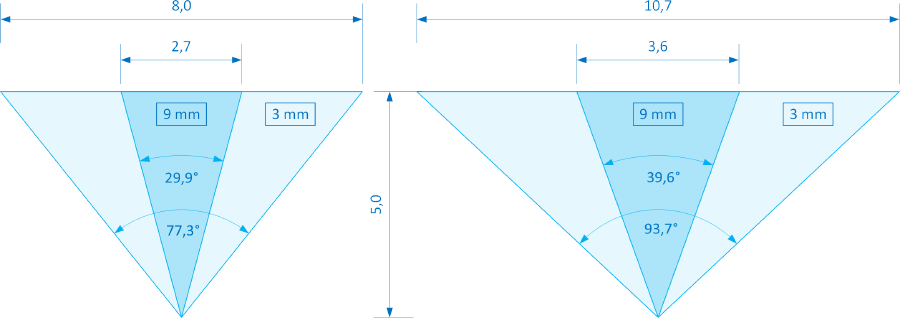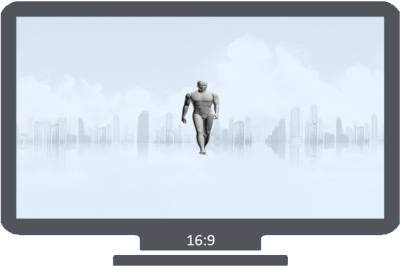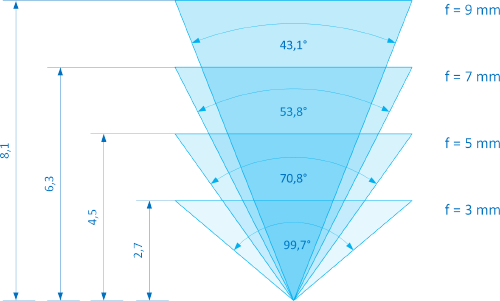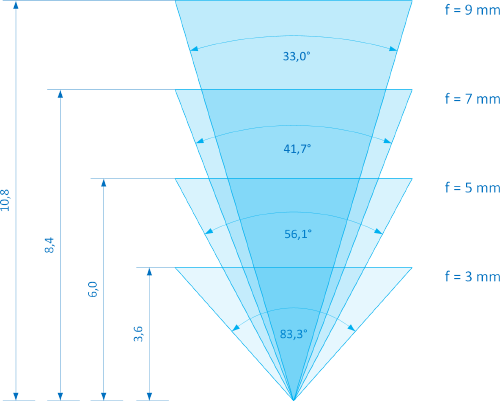CCTV Technologies
In this article I will illustrate, using the formulas reported in a previous article, how the dimensions of the sensors influence the shooting geometries, a topic of some importance in the design of a CCTV System.
To visually illustrate the differences, we will use the following two sensors as examples:
- A) 1/3” – 4,8 x 3,6 mm
- B) 1/2" – 6,4 x 4,8 mm
assuming that both have a Full HD resolution (1.920 x 1.080 px) and to use a 3÷9 mm varifocal lens.
By making the calculations for the extreme values of the focal length, with a distance from the shooting plane of 5 m we obtain the following situations, with the data on the left referring to the 1/3” sensor.

As it was obvious to suppose, Sensor B, which is larger than the other, produces a greater shooting range (10,7 m), and of course the same applies to the vertical dimensions.
But all that glitters is not gold; knowing that both sensors horizontally contain 1.920 pixels we can calculate their respective pixel densities:
- Sensor A (1/3”)
- focal = 9 mm: 1.920 / 8,0 = 240 px/m
- focal = 3 mm: 1.920 / 2,7 = 711 px/m
- Sensor B (1/2”)
- focal = 9 mm: 1.920 / 10,7 = 179 px/m
- focal = 3 mm: 1.920 / 3,6 = 533 px/m
if the shots to be taken require the recognition of the subjects, if not even the identification, they must guarantee, as reported in the literature, a density of at least 250 px/m, therefore sensor B, unlike the other, does not allow to satisfy this requirement for the entire excursion of the varifocal lens.
To demonstrate this statement, we make calculations with a reference subject 1,6 m high which, with pixel density at 250 px/m, will occupy 400 pixels vertically and on a Full HD monitor just over 1/3 of the same, as in the figure below.

To respect these constraints with Sensor B we obtain, for four different focal lengths:

while for Sensor A:

In practice, the 1/3" sensor allows you to frame the reference subject with 250 px/m up to 10,8 m away against the 8,1 m of the 1/2" sensor, with a difference of the order of 20%.
The calculations just illustrated show that if the goal of the CCTV System is observation/detection, a larger sensor is more suitable, on the contrary, if the goal is identification/recognition, it is necessary to choose a sensor of smaller size.

 English (United Kingdom)
English (United Kingdom)  Italiano (Italia)
Italiano (Italia) 
